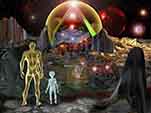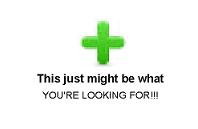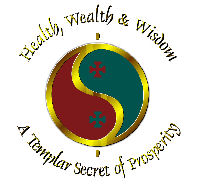Homeopathy
https://en.wikipedia.org/wiki/Homeopathy
"Homeopathy or homœopathy is a pseudoscientific[1][2][3][4] system of alternative medicine. It was created in 1796 by Samuel Hahnemann. Its practitioners, called homeopaths, believe that a substance that causes symptoms of a disease in healthy people would cure similar symptoms in sick people; this doctrine is called similia similibus curentur, or "like cures like".[5] Homeopathic preparations are termed remedies and are made using a process called homeopathic dilution. This process involves repeatedly diluting a chosen substance, typically until nothing -- that is not a single molecule -- of the original substance is likely to remain in the product.[6] Between the dilution iterations the homeopaths practice hitting the diluent and/or shaking it violently, and claim that it makes the diluent remember the original substance after its removal. The diluent is typically either distilled water, ethanol or sugar. Practitioners select remedies by consulting reference books known as repertories, and claim that these remedies, upon oral intake, can treat or cure disease.[7]
Despite the claims by the practitioners, homeopathic preparations are not effective for treating any medical condition.[8][9][10] All relevant scientific knowledge about physics, chemistry, biochemistry and biology[9][11][12][13][14][15] gained since at least the mid-19th century[16] confirms that homeopathic remedies have no active content and no biophysical effect. Hahnemann's theory of disease, centered around principles he termed Miasms, is inconsistent with the germ theory of disease in medicine. Clinical trials have generally demonstrated no objective effect from homeopathic preparations.[17][18][19]:206[20][21] Its lack of effectiveness has led to it being characterized within the scientific and medical communities as quackery and nonsense.[3][22][23]
Regulation and prevalence of homeopathy vary by country. In a recent US survey, 2.3% of the population had used homeopathic preparations in the surveying year[citation needed]. A 2008 survey in Germany found that 11.5% had used homeopathy[citation needed].
Assessments of homeopathy by national and international bodies have recommended withdrawal of government funding. Australia, the United Kingdom, Switzerland and France,[24] as well as the European Academies' Science Advisory Council, and the Commission on Pseudoscience and Research Fraud of Russian Academy of Sciences each concluded that homeopathy is ineffective, and recommended against the practice receiving any further funding.[25][26][27][28] Notably, France and England, where homeopathy was formerly prevalent, are in the process of removing all public funding. The National Health Service in England ceased funding homeopathic remedies in November 2017[29][30] and asked the Department of Health in the UK to add homeopathic remedies to the blacklist of forbidden prescription items,[31] and France will remove funding by 2021.[32] In November 2018, Spain also announced moves to ban homeopathy and other pseudotherapies.[33]"
~~~
Louis Pasteur
https://www.britannica.com/biography/Louis-Pasteur/Vaccine-development
"Pasteur’s first important discovery in the study of vaccination came in 1879 and concerned a disease called chicken cholera. (Today the bacteria that cause the disease are classified in the genus Pasteurella.) Pasteur said, “Chance only favours the prepared mind,” and it was chance observation through which he discovered that cultures of chicken cholera lost their pathogenicity and retained “attenuated” pathogenic characteristics over the course of many generations. He inoculated chickens with the attenuated form and demonstrated that the chickens were resistant to the fully virulent strain. From then on, Pasteur directed all his experimental work toward the problem of immunization and applied this principle to many other diseases.
Pasteur began investigating anthrax in 1879. At that time an anthrax epidemic in France and in some other parts of Europe had killed a large number of sheep, and the disease was attacking humans as well. German physician Robert Koch announced the isolation of the anthrax bacillus, which Pasteur confirmed. Koch and Pasteur independently provided definitive experimental evidence that the anthrax bacillus was indeed responsible for the infection. This firmly established the germ theory of disease, which then emerged as the fundamental concept underlying medical microbiology.
Pasteur wanted to apply the principle of vaccination to anthrax. He prepared attenuated cultures of the bacillus after determining the conditions that led to the organism’s loss of virulence. In the spring of 1881 he obtained financial support, mostly from farmers, to conduct a large-scale public experiment of anthrax immunization. The experiment took place in Pouilly-le-Fort, located on the southern outskirts of Paris. Pasteur immunized 70 farm animals, and the experiment was a complete success. The vaccination procedure involved two inoculations at intervals of 12 days with vaccines of different potencies. One vaccine, from a low-virulence culture, was given to half the sheep and was followed by a second vaccine from a more virulent culture than the first. Two weeks after these initial inoculations, both the vaccinated and control sheep were inoculated with a virulent strain of anthrax. Within a few days all the control sheep died, whereas all the vaccinated animals survived. This convinced many people that Pasteur’s work was indeed valid."
~~~
What is immunology?
https://www.immunology.org/public-information/what-is-immunology
Vaccines are agents that teach the body to recognise and defend itself against infections from harmful pathogens, such as bacteria, viruses and parasites. Vaccines provide a sneak 'preview' of a specific pathogen, which stimulates the body's immune system to prepare itself in the event that infection occurs. Vaccines contain a harmless element of the infectious agent that stimulate the immune system to mount a response, beginning with the production of antibodies. Cells responsive to the vaccine proliferate both in order to manufacture antibodies specific to the provoking agent and also to form 'memory cells'. Upon encountering the infectious agent a second time, these memory cells are quickly able to deal with the threat by producing sufficient quantities of antibody. Pathogens inside the body are eventually destroyed, thereby thwarting further infection. Several infectious diseases including smallpox, measles, mumps, rubella, diphtheria, tetanus, whooping cough, tuberculosis and polio are no longer a threat in Europe due to the successful application of vaccines."
~~~
Any similarities there?
Dilution? Attenuated? Low-virulence?
Building up a tolerance?






































